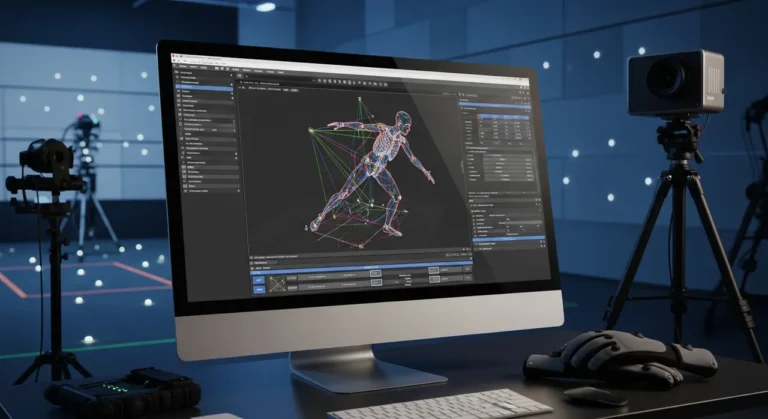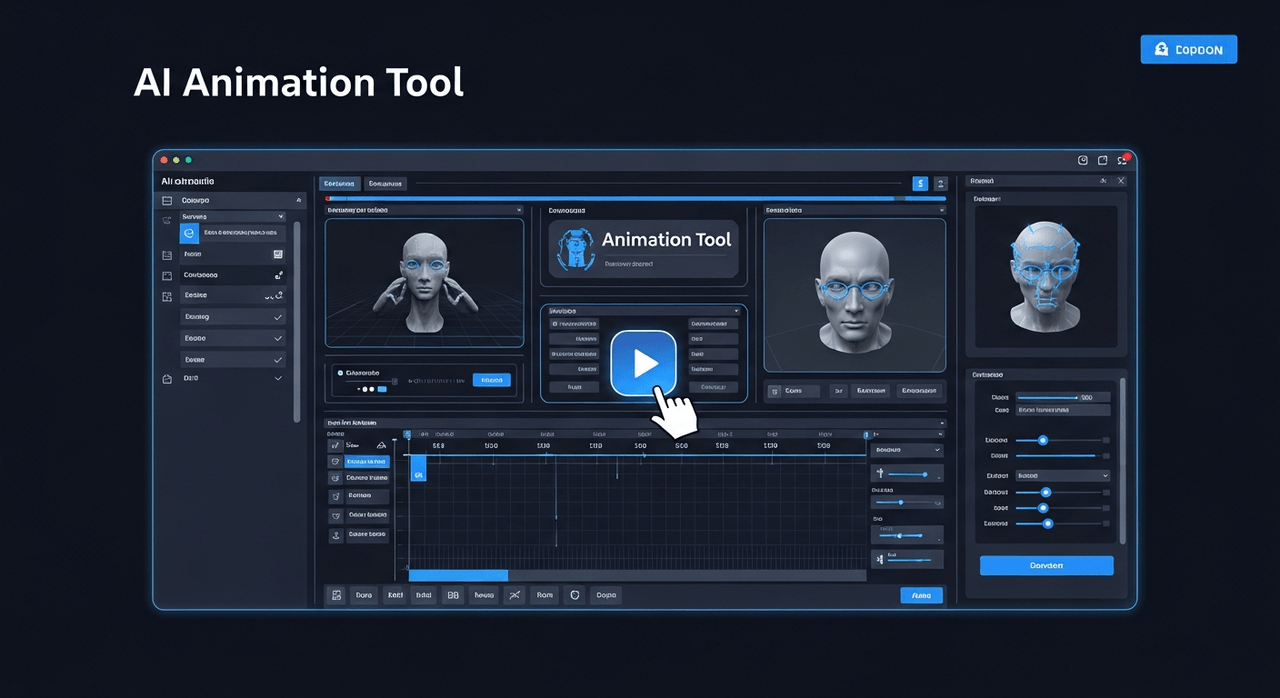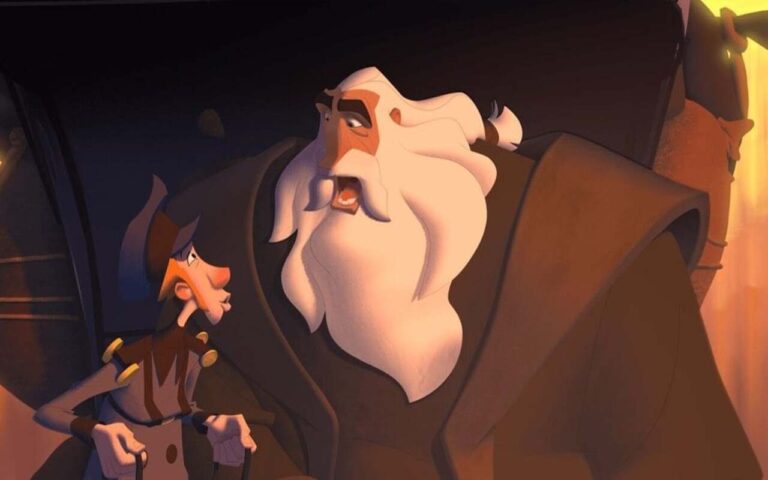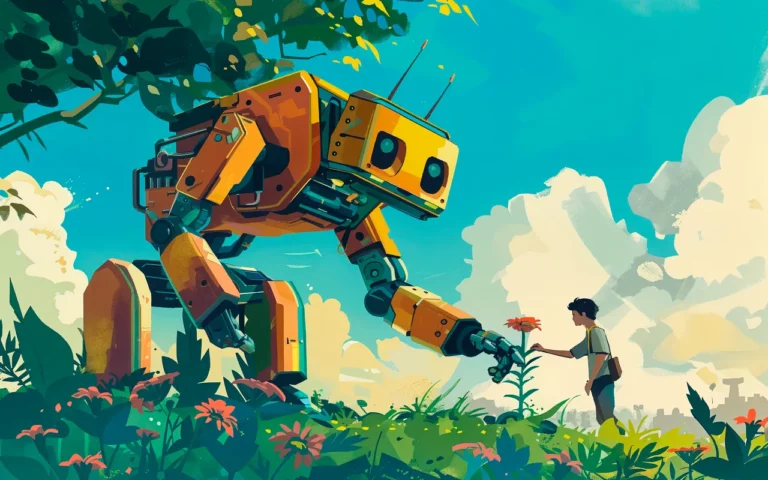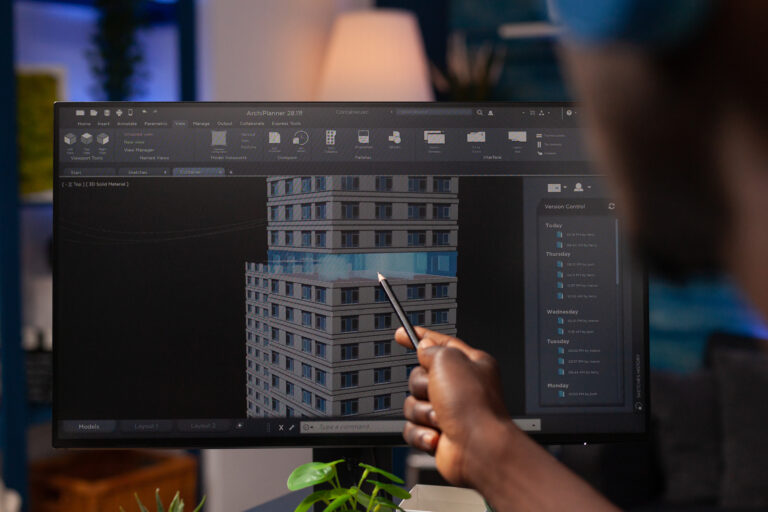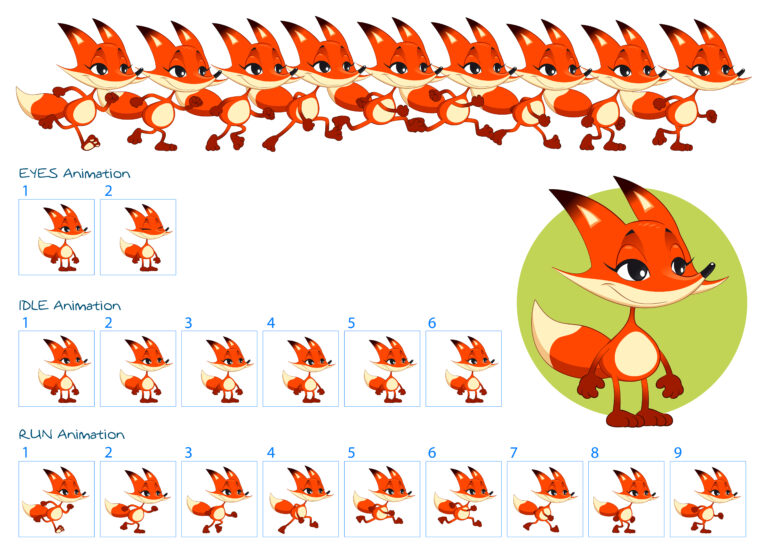Have you ever wondered how an animation scene you watch on screen has been captured? Well, you are in for a treat! 3D rendering transforms digital models into vibrant visuals, blending science, technology, and artistry.
In this article, we will discuss everything you need to know about 3D rendering, from the science behind this production stage to the advanced techniques used by every professional 3D rendering studio.

Need 3D Animation Services?
Visit our 3D Animation Service page to see how we can help bring your ideas to life!
What Is 3D Rendering?
Let’s start with its definition and different types of 3D rendering!
Definition and Purpose of 3D Rendering
3D rendering converts 3D models into 2D images or animations using algorithms and hardware.
It simulates lighting, textures, and physics to create lifelike visuals.
The purpose is to bring digital scenes to life for films, games, and more. Rendering is the final visual step in the 3D animation pipeline.
Rendering in the Production Pipeline
Now that we know what rendering is, the question is, when do we render animation?
The answer is toward the end of production.
Rendering is situated in the 3D animation pipeline, following the stages of modelling, texturing, rigging, animation, lighting setup, and camera configuration. Leaving you with only one stage to go, post-processing your animation.
If you are about to finish the rendering stage of your animation, buying a bottle of champagne for the celebration is a good idea.
How 3D Rendering Differs from Modeling and Animation
Types of 3D Rendering: Real-Time vs Pre-Rendered
- Real-time rendering prioritizes speed for interactive applications like games. It uses techniques like rasterization.
- Pre-rendered rendering emphasizes quality for films and leverages complex methods like ray tracing.
Each type of rendering balances performance and visual fidelity differently.
Your choice of rendering method highly depends on your project’s goals.
The Science Behind 3D Rendering
Now let’s discuss the technical and fundamental matters that shape the concept and results of rendering.
How Rendering Simulates Light and Physics
Rendering mimics real-world light behavior by calculating reflections, refractions, and shadows.
Physics-based algorithms (such as PBR) simulate material properties and environmental interactions. This creates realistic visuals, from soft lighting to dynamic collisions.
Advanced rendering techniques enhance immersion and the user experience.
Algorithms and Mathematical Foundations
Rendering relies on mathematical models like ray tracing and global illumination.
These algorithms compute light paths and surface interactions using geometry and physics equations.
Efficient algorithms reduce computation time while maintaining quality. And as always, precision drives stunning visuals.
The Role of GPUs and Hardware Acceleration
GPUs are critical for speed and quality.
Graphics Processing Units (GPUs) handle parallel computations for rendering tasks.
They accelerate complex calculations to enable real-time performance.
Hardware advancements, like NVIDIA’s RTX, enhance ray tracing and AI-driven rendering.
Rendering APIs: Bridging Software and Hardware
A Rendering API (Application Programming Interface) is a set of functions, protocols, and tools that allows software applications to communicate and interact with graphics hardware to generate visual outputs such as images, animations, and 3D graphics.
In other words, it serves as a bridge between the application code and the underlying graphics hardware.
Examples of these APIs include OpenGL and Vulkan, which are more general APIs mainly used for real-time rendering.
OpenGL
Renowned for its versatility, OpenGL caters to both 2D and 3D graphics on multiple platforms. Its functionalities encompass drawing primitives, applying transformations, and manipulating shaders.
However, mastering OpenGL demands a comprehensive grasp of graphics programming, requiring developers to manage intricate rendering details.
OpenGL abstracts many of the hardware-specific details, making it more accessible to developers who don’t require deep knowledge of graphics hardware.
This abstraction simplifies the development process but can result in some performance overhead due to the additional work the driver needs to perform.

Vulkan
Vulkan takes a more explicit approach, providing more specific control over the graphics hardware of computer resources, plus reducing driver overhead. It requires developers to manage more details than OpenGL.
This control can lead to better performance and more efficient use of hardware resources.
For example, Vulkan puts memory management in your hands, allowing you to dictate the flows through the graphics pipeline and synchronize operations between stages.

Rendering Engines: Powering Visual Magic
While OpenGL and Vulkan are primarily designed for real-time rendering scenarios, such as video games, simulations, interactive design, and visualization, there may be more suitable choices for non-real-time rendering, such as pre-rendered animations in movies and cinematic productions.
Now you might be asking, what good are these APIs if a 3D animation production company can’t make final animation renders using them?
Rendering APIs provide the foundational framework and tools for interacting with graphics hardware or software.
In contrast, rendering engines use these APIs to implement specific rendering techniques, calculations, and optimizations to create the final images or frames from 3D scene data.
RenderMan
RenderMan, produced by Pixar Animation Studios, carries a legacy rich and deep within the world of animation.
It’s all about the magic of shading tools, letting artists craft materials and surfaces in remarkable detail.
Think of it as the master behind hair and fur, adding that realistic touch to characters.
Imagine a symphony of global illumination and ray tracing, painting scenes with light and shadow so vivid they feel real.
RenderMan’s interface strikes a balance, giving technical precision while leaving room for artistic flair. The brush adds cinematic realism to high-end animated films, a part of the magic that brings imagination to the big screen.
V-Ray
Enter Chaos Group’s V-Ray, a great tool for realism. V-Ray’s lighting system is the light conductor, bringing life-like brightness and shadow into the picture.
The real trick? It’s the library of materials and shaders, pre-made bits that artists piece together for incredible textures.
Here’s where it gets wild. V-Ray loves both CPUs and GPUs! This dynamic duo delivers speed and quality.
Adaptive sampling’s like a conductor fine-tuning an orchestra, making rendering faster. And remember the camera, capturing motion’s essence with depth and motion blur.
Moreover, its newest update includes integration with Blender, making this tool a favorite in the market!
Redshift
Redshift is best known for its speed, where render times are fast and efficient. Leaving quick render times in its wake.
Real-time previews are the sidekick, offering artists instant feedback on their creative journey.
But its real aspect is the Volumetric effects that craft a world of atmosphere, fog, fire, and more.
Redshift’s versatility shines in multiple GPUs, scaling up for bigger studios. Redshift’s stage is film, commercials, and motion graphics, where speed meets artistry.
Cycles
Now, let’s step into Blender’s world with Cycles. Blending realism and artistry.
Instead of complex coding, think of materials as a painter’s palette. Real-time previews are the instant mirror for artists, showing their work as they create.
Cycles weave light like a story, giving life to reflections, refractions, and more. It’s a duo of CPU and GPU, the perfect partnership for speed and power.
Cycles provide strong tools for the artist, enabling them to have good control over aspects like ambient occlusion, contrast, level of detail, etc.
3D Rendering in Different Industries
3D rendering powers diverse fields through enhancing visuals and functionality.
3D Rendering in Film and Animation
Rendering is essential for blockbuster animations!
Films use pre-rendered techniques for photorealistic visuals, as seen in Pixar’s work with RenderMan.
Detailed lighting and textures create cinematic magic.
Rendering creates lifelike characters and immersive worlds.
Use of Rendering in Video Games
Games rely on real-time rendering for interactive experiences.
Engines like Unreal Engine and Unity use rasterization for fast visuals.
Dynamic lighting and physics enhance gameplay immersion, since rendering ensures smooth, responsive environments.
Applications in Architecture and Product Design
Architects use rendering for realistic building visualizations.
Product designers create detailed prototypes with accurate textures.
Rendering aids in client presentations and design validation by bridging concept and reality with precision.
Role in Virtual Reality and Augmented Reality
VR/AR demands real-time rendering for immersive, responsive visuals.
Lightweight algorithms ensure smooth performance on headsets.
Rendering creates seamless virtual worlds and AR overlays. It’s critical for engaging user experiences.
Real-Time vs Offline Rendering: Which One to Choose?
Choosing between real-time and offline rendering often depends on project goals.
Pros and Cons of Real-Time Rendering
- Pros: Fast, interactive, ideal for games and simulations. Supports dynamic gameplay with responsive visuals.
- Cons: Sacrifices some visual fidelity for speed. Limited by hardware constraints. Best for real-time applications.
Advantages of Offline/Pre-Rendered Workflows
- Pros: Delivers photorealistic quality with techniques like ray tracing. Ideal for films and high-quality animations.
- Cons: Computationally intensive, requiring longer render times. Suits non-interactive projects.
Choosing Based on Project Requirements
Real-time rendering fits games and VR, needing instant feedback.
Offline rendering suits films and ads, prioritizing visual perfection.
Assess hardware, deadlines, and desired quality.
Hybrid approaches can balance both needs.
3D Rendering Techniques
Rendering techniques are artistic and technical tools that transform 3D data into eye-catching visual experiences.
The following methods define how light interacts with objects in a scene, resulting in various levels of realism and performance.
Here are some of the key techniques used by professional producers:
Ray Tracing
Ray tracing is considered one of the most advanced rendering techniques.
By simulating the path of light rays as they bounce around a scene, ray tracing achieves remarkable realism in reflections, refractions, and lighting interactions.
While this technique yields astonishingly lifelike visuals, it demands significant computational power and is often used for pre-rendered or high-quality animations.
Rasterization
Rasterization is the foundation of real-time rendering.
Simply put, it’s converting 3D geometry into 2D images displayed on the screen.
While it lacks the physical accuracy of ray tracing, rasterization’s efficiency allows for interactive and real-time applications, making it the go-to technique for video games and simulations.
Global Illumination
Global illumination algorithms are created to simulate how light interacts with surfaces and bounces between objects, creating complex lighting interactions.
Techniques like radiosity and photon mapping contribute to realistic scenes by considering effects like soft shadows, ambient occlusion, and indirect lighting. However, the computational demands of global illumination can be substantial.
Shadow Mapping
Shadows are crucial in crafting depth and rich values in rendered scenes.
Shadow mapping involves rendering a depth map from the perspective of a light source and comparing it to the main camera’s view to determine which areas are in shadow.
While less physically accurate than ray-traced shadows, shadow mapping is efficient and widely used in real-time applications.
Rendering Optimization
Rendering optimization is a balancing act between achieving high-quality visuals and maintaining real-time performance.
Below are several essential strategies that help strike this balance:
Level of Detail (LOD)
Level of Detail involves using different versions of an object’s model based on distance from the camera.
Distant objects use simpler models, conserving processing power and memory.
This approach ensures that resources are allocated where they are most needed, optimizing rendering speed.
Culling
Frustum culling involves skipping the rendering of objects outside the camera’s field of view, significantly reducing unnecessary computations.
Occlusion culling takes it a step further by avoiding rendering objects blocked by others in the scene.
Baking
Baking is the pre-computation of lighting and shadow information, which is then stored in textures or maps.
This technique reduces real-time calculations during rendering, resulting in improved performance.
Baked lighting can provide intricate details and visual quality without damaging the system.
Parallelization
Modern processors and GPUs are equipped with multiple cores, enabling parallel processing.
Utilizing multi-threading and GPU parallelism allows rendering tasks to be distributed across these cores, improving performance by taking advantage of the available processing power.
Optimization is a constant consideration in rendering, as it directly affects how smoothly animations run and how realistic the visuals appear.
A balanced approach to optimization ensures that the final output maintains the desired quality while delivering a seamless user experience.
Final Words
In the detailed and dynamic world of animation, 3D rendering is a fusion of algorithms, APIs, and artistic flair that helps craft the animated wonders we adore.
Rendering APIs like OpenGL and Vulkan link software and hardware, shaping real-time and pre-rendered animations.
Rendering engines such as RenderMan, V-Ray, Redshift, and Cycles take centre stage, transforming scenes into mesmerizing visual tales.
Techniques like ray tracing and rasterization weave realism and speed, while optimization strategies like LOD, culling, baking, and parallelization fine-tune the balance between quality and performance.
This symphony of elements creates captivating animations that spark wonder and immerse audiences in virtual adventures.
